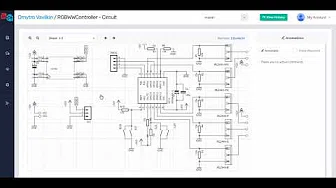Files
Scanning the repository...
Last update 2 years 7 months
by PCB CUPID
| FilesDocumentation | |
|---|---|
| .. | |
| User Guide.txt |
User Guide.txtStep 1: Check the flashlight Before using the flashlight, you should check it to ensure that it is in good working condition. Check the battery level to make sure it has enough power to function. If the flashlight has been sitting unused for a while, it's a good idea to replace the batteries to ensure that they're fresh and will last longer. Step 2: Turn on the flashlight Most flashlights have a simple on/off switch. Locate the switch on your flashlight and turn it on. Some flashlights have multiple settings, such as high and low power or a strobe feature. If your flashlight has multiple settings, familiarize yourself with them and learn how to toggle between them. Step 3: Adjust the beam Some flashlights allow you to adjust the beam of light, while others have a fixed beam. If your flashlight has an adjustable beam, learn how to adjust it to suit your needs. A wider beam is useful for illuminating larger areas, while a narrow beam is better for focusing on specific objects. Step 4: Use the flashlight Now that your flashlight is turned on and the beam is adjusted, you can start using it. Hold the flashlight securely in your hand and point it in the direction you want to illuminate. If you need to use the flashlight for an extended period, it's a good idea to hold it with both hands to reduce fatigue. Step 5: Turn off the flashlight When you're finished using the flashlight, turn it off. This will help preserve the battery life and ensure that the flashlight is ready to use the next time you need it. Step 6: Store the flashlight Store your flashlight in a safe and dry place. Avoid leaving it in damp or humid environments, which can damage the batteries and reduce the flashlight's effectiveness. Keep the batteries removed when not in use for extended periods, as the batteries can corrode and cause damage to the flashlight. Tips for Using a Flashlight: Always carry spare batteries or a spare flashlight to ensure that you're never without a source of light when you need it. If you're using the flashlight in an emergency situation, conserve battery power by using the flashlight on low power or turning it off when not in use. If you're using the flashlight outdoors, be aware of your surroundings and avoid shining the light into other people's eyes or into traffic. If you're using the flashlight in a dark environment, such as a cave or underground, be careful not to bump into obstacles or trip over obstacles that you can't see. If you're using the flashlight for an extended period, take breaks to rest your hands and reduce fatigue.








